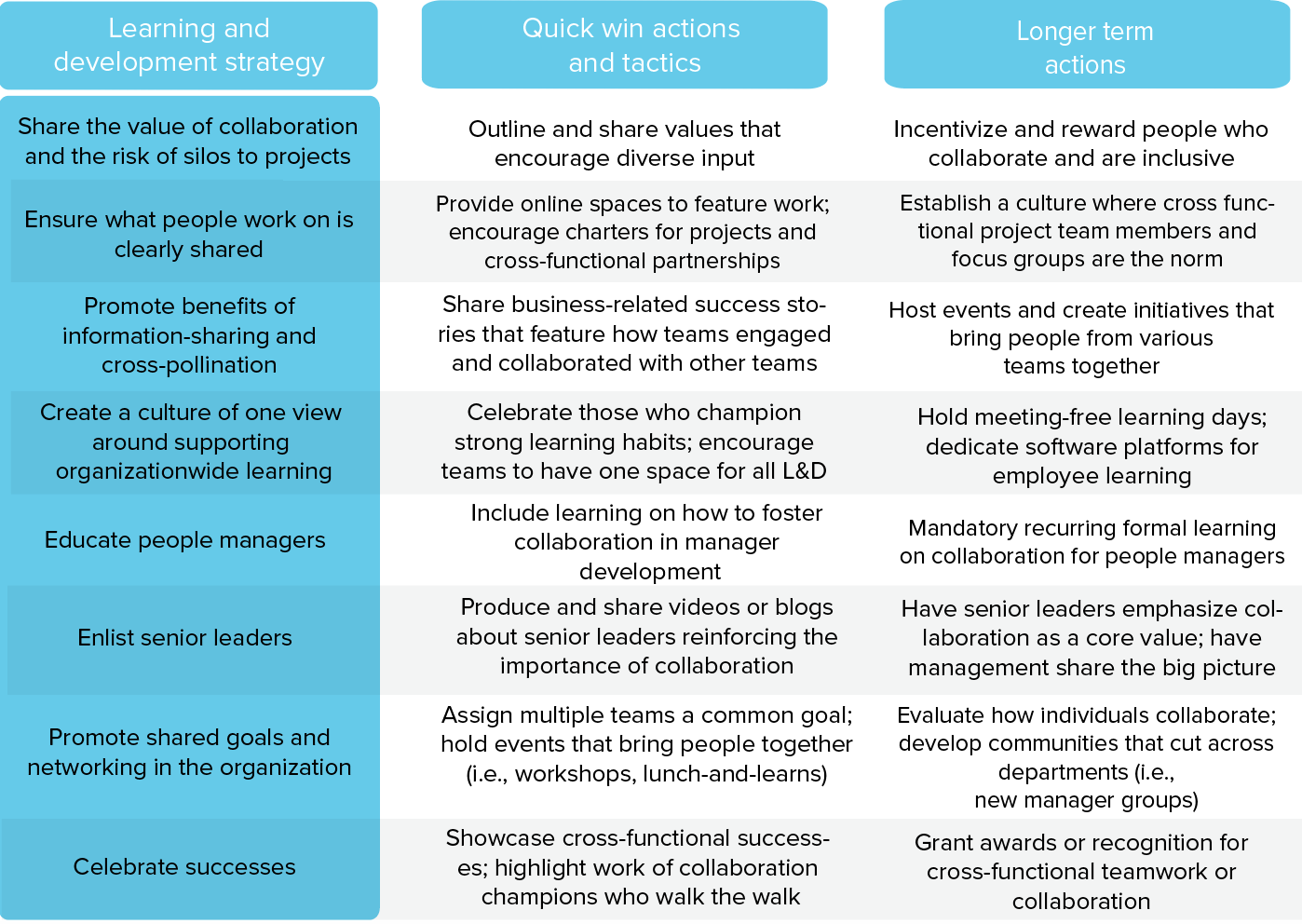Have you ever learned about a project that you should have been involved in just as it was about to go live? Or, in the same vein, have you ever received news about a change that seemed to only help a few groups, but not the entire organization? These are indicators of not only a silo mentality in your organization, but a silo reality. This article will explore what silos at work look like, and what a learning and development function can do to help expand individual thinking and enable a more collaborative work environment.
Silos store material, such as grain in agriculture. A siloed mentality at work refers to a mindset that keeps information contained within a narrow part of an organization. A silo mentality is created when groups focus on their own goals instead of broader organizational goals. It is defined by the Business Dictionary as “a mindset present when certain departments or sectors do not wish to share information with others in the same company.” Whether consciously or unconsciously created, silos at work cut off much needed inquiry and sharing that enables a sense of collaboration and even belonging.
The bigger an organization gets, the greater the risk of silos, because getting consensus and asking for others input can seem laborious. Employees can get stuck into their narrow domains of work.
How silos create risk
Silos keep information contained. This creates a situation of haves and have-nots, and prevents well-informed decision making. Over time this will not only erode collaboration, it will also hinder progress and productivity in your organization.
Decisions being made that consider a diverse set of needs and views helps prevent issues with awareness and adoption. However, when operating in a silo, a team only draws from a narrow set of needs and knowledge. While this seems like a faster way to make decisions and achieve progress early on, issues will happen post-implementation, such as slow or minimal user adoption and proficiency. In time, this can lead to people feeling disconnected and not valued.
Each siloed effort jeopardizes the organization’s broader purpose and mission instead of reinforcing it. The silo mentality can prevent learning, reduce agility and create unnecessary conflict as teams stay stuck in — and defend — what is important to their small group versus what serves the overall organization.
Why do silos exist?
We are all surrounded by a select group of people at work who typically share similar perspectives and scopes of the workplace. Silos happen when we focus on specific goals. As we focus more on those goals, our visibility of work that extends beyond those goals, in turn, lessens. The more focused one is on their day-to-day operations without external input or views, the more likely silo mentality will be present.
Other factors can play a role too. For example, if sharing information is used against an individual, or people seem annoyed by hearing about what others are doing, a culture where information is not shared can form. Or, if people are not given due credit for their ideas, they will not want to share information early on to ensure they can receive the credit for their work.
In either scenario, this is not ideal because the team is losing out on getting important information, such as reactions, feedback and input that can better inform their decisions and work before things are implemented and changes are costly, or adoption is compromised.
How can a learning organization help?
The table below outlines a few strategies and tactics through which L&D teams can help mitigate the silo mentality.

Key takeaways
While focusing on a topic and making decisions in a timely manner in your own silo may seem efficient, failing to have a variety of perspectives can really impede progress, a sense of being valued and having a well-informed decision.
L&D teams can play a key role in mitigating the silo mentality in growing organizations through educating, encouraging and helping celebrate collaboration over the speed that comes from a siloed mentality and approach.
Enlisting senior management in the efforts will help ensure this is not an HR-effort but something embraced by the leaders.















